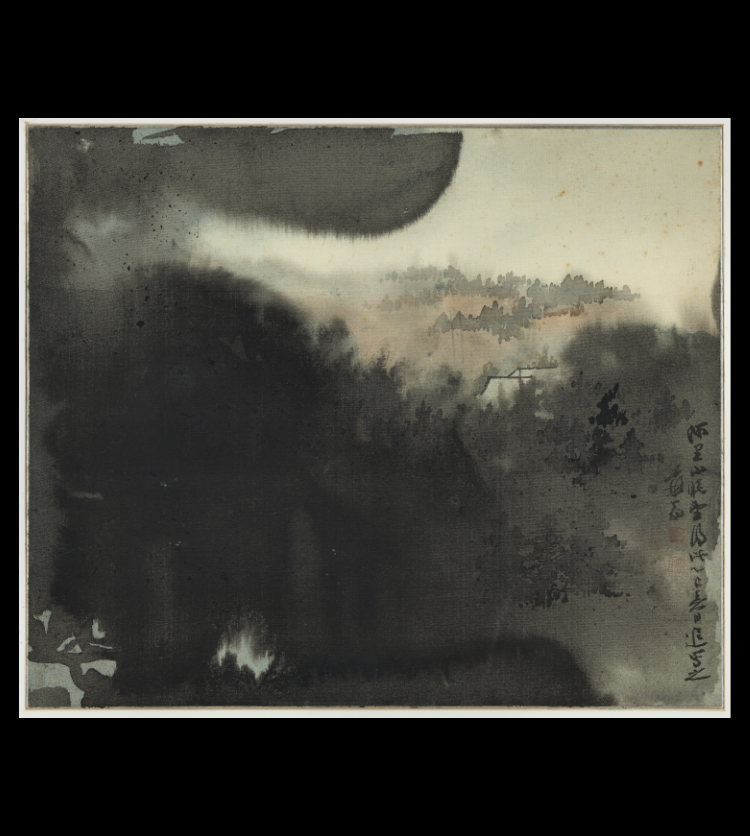Have you ever experienced the sunrise at Alishan?
Chang Da-chien, the artist of this work, loved to travel, and he has left his footprints all over the world. Naturally, he has also seen the vistas Taiwan has to offer, believing that the sunrise at Alishan was a wonder of Taiwan—a wonder of the world even. Although this painting is small, the scene depicted is majestic. Chang splashed ink over the canvas without restraint, giving the painting an abstract flowing, stained, and bleeding affect that shows a strong contrast of light and dark between the sunrise and the mountain and forest, as well as the dancing of sun and shadow. At the same time, Chang used techniques such as broken ink and splashed ink to let thick and thin as well as dry and wet ink seep into each other to bring out its layers and charm.
In the foreground of the painting, Chang used thick ink to show the tranquil and remote mountain forest and the dense morning fog. If you move your gaze back, you can see the roofs of houses outlined in simple brush strokes and simple traces of ink dotting out the branches and leaves of trees in the morning light. Looking at the painting makes you feel as though you are looking at the actual sunrise.
Chang Da-chien visited Paris in 1956 for a personal exhibition and to meet Picasso. Inspired by modern western painting, he began to combine the abstract and concrete, splashing ink and colors with a modern feel—this small work is one of those splashed ink landscape paintings. The painter Hsu Pei-hung once praised Chang by saying, “One Da-chien every five hundred years”, meaning one of Chang’s caliber is only seen once every few centuries.
